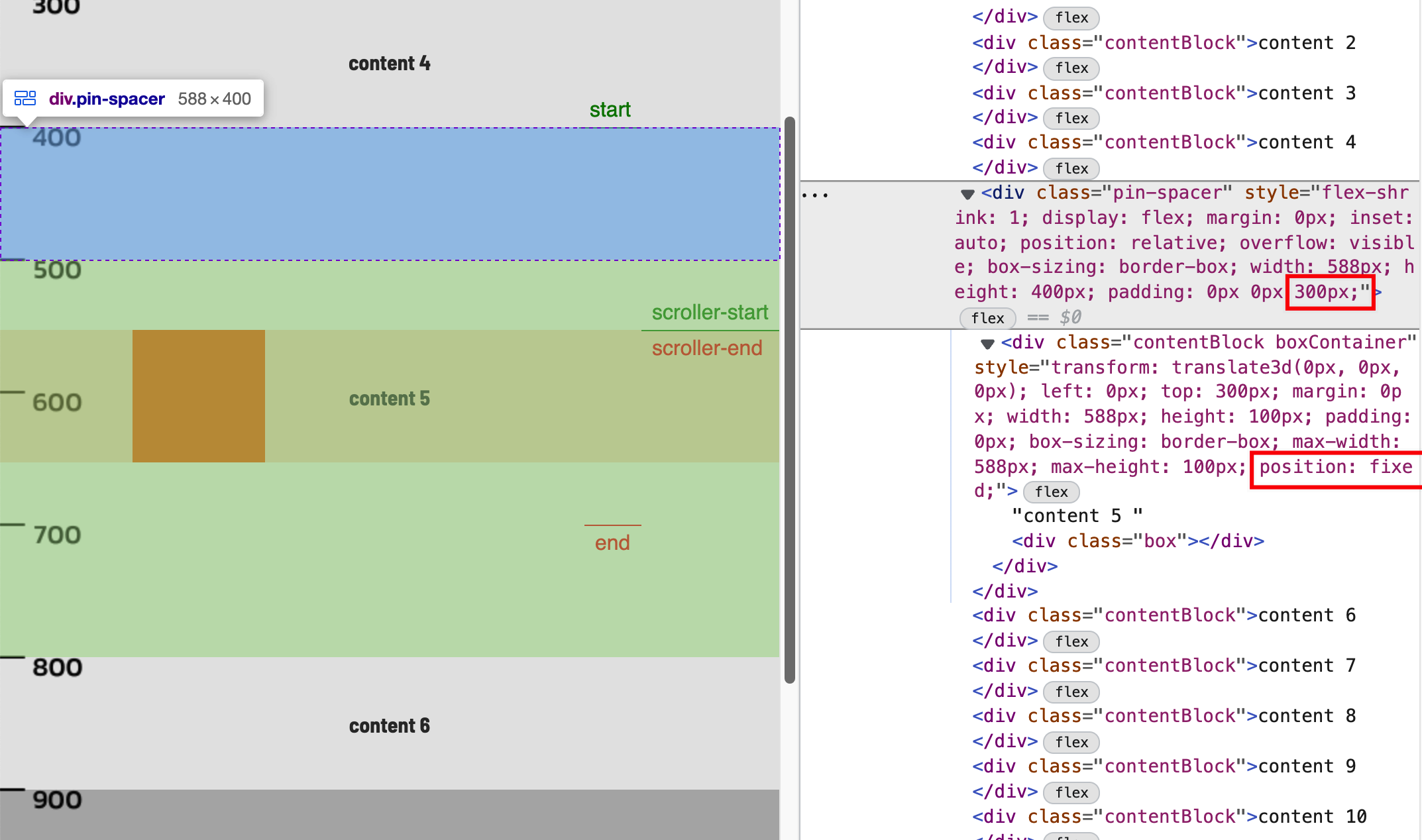GSAP 3 scrollTrigger Scrub and Pin

Scrub and Pin
View this car moving on a wide screen:
scrub: truewill scrub the animation between the scroll boundary. But the behavior is so hard for mousewheel.scrub: 1is more natural. if scrub number increases, the animation lasts longer.pin: truewill pin the car with a stable Y. Otherwise the car will move right and up together.pinmakes its Y unchanged.
pinSpacing
pinSpacing:true: space will be added to the page to push content down vertically so that it will perfectly arrive in its "normal" position when pinning is de-activated. Usually it's natural to set pinSpacing as true given scrub:true and pin:true.pinSpacing:false: content will scroll behind the pinned element.
Change pinSpacing to true so that the page copy does not scroll behind the pinned animation.
With pinSpacing:true (default) the .pin-spacer div will add padding to push content below the pinned item down.
Be sure to set pinSpacing to true and false and compare the difference for yourself
Pin Deep Dive - How does pinning work under the hood?
When scrolling between the boundary, pin:true will add position:fixed to the target.
<div
class="pin-spacer"
style="flex-shrink: 1; display: block; margin: 0px; inset: 400px 1705px -99px 100px; position: absolute; overflow: visible; box-sizing: border-box; width: 100px; height: 100px; padding: 0px;"
>
<div
class="box"
style="transform: translate3d(0px, 0px, 0px); left: 100px; top: 300px; margin: 0px; width: 100px; height: 100px; padding: 0px; box-sizing: border-box; max-width: 100px; max-height: 100px;
+ position: fixed;"
></div>
</div>
When scrolling out of the boundary, position:fixed is removed, and translate3d() Y will be calculated.
<div
class="pin-spacer"
style="flex-shrink: 1; display: block; margin: 0px; inset: 400px 1705px -99px 100px; position: absolute; overflow: visible; box-sizing: border-box; width: 100px; height: 100px; padding: 0px;"
>
<div
class="box"
+ style="transform: translate3d(0px, 300px, 0px);
inset: 0px auto auto 0px; margin: 0px; width: 100px; height: 100px; padding: 0px;
- position: fixed;"
></div>
</div>
-
The pinned element
.boxgets immediately wrapped in a<div class="pin-spacer">with a fixed width/height to match. A class of "pin-spacer" is added to that wrapper.Think of it like a proxy element that props open the space where the pinned element was in the DOM so that when it flips to
position: fixedthings don't collapse. -
When the ScrollTrigger is active (when the scroll position is between the start and end), it sets the pinned element to
position: fixedand positions it with fixed top/left/width/height values...unless the scroller isn't the viewport in which case it never usesposition: fixedbecause that'd break sub-scrolling, so it uses pure transforms. IfpinReparentis set totrue(we recommend avoiding that if you can), the pinned element will get reparented to the<body>and styles will be moved inline to ensure appearance is maintained.

By default, pinSpacing:true, padding will be added to the bottom (or right for horizontal: true) of the pin-spacer
so that [in most cases] things get pushed further down/right. When the pinned element gets unpinned, the content
below/right will have caught up. So if, for example, the pinned element stays pinned for 300px, there would be padding
of 300px added.
More information from GreenSock ScrollTrigger Docs
Pinning car project
Now that we have discussed some of the technical details of pinning and pinSpacing let's apply it to something a bit more "real world". Let's use the very beginning example.
- enable pinning by setting
pin:true - view the
.pin-spacerbackground color (edit the css) - set
pinSpacing:false - change start and end values in scrollTrigger config object
References
- Craig Roblewsky's blog: motiontricks.com